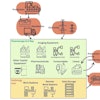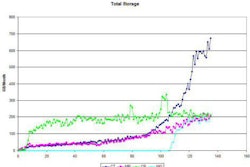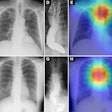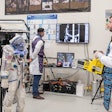ORLANDO - For hospital radiology administrators, securing financing for capital expenditures is only the beginning of the complex process of transitioning a department to digital imaging.
Not only is it important to thoroughly evaluate the needs of the department and its staff workflow patterns before the new technology arrives, it's also crucial to follow through with training and postinstallation assessment, according to a presentation today at the 2007 American Healthcare Radiology Administrator (AHRA) meeting.
AHRA attendees heard about one department's experience with digital imaging, specifically the installation of digital radiography (DR) in the emergency room, at Lehigh Valley Hospital (LVH) and Health Network in Pennsylvania. Sheila Sferrella, vice president of ambulatory services at Saint Thomas Health Services in Nashville, TN, and her former colleague Cathleen Story, administrator of diagnostic services at Lehigh, told a Tuesday audience how they handled DR in the ER at Lehigh Valley, which performs 530,000 imaging exams per year across its network.
Justifying the move to DR
Why DR? It's all about workflow, according to Sferrella, and if the ER department can streamline its processes, it can boost the time available to perform additional tasks and respond more quickly to other requests for service.
So the first step in LVH's technology transition was to evaluate its current workflow patterns, looking for ways to reduce the number of steps staff must take to complete a process. Story and Sferrella created workflow charts and performed time-and-motion studies before and after each digital transition, which was accomplished in stages, starting in 2004 by installing PACS and 15 computed radiography (CR) units across its network. A DR unit was added to the emergency department (ED) two years later.
"We do workflow (and time-and-motion studies) with all major projects, and find that it gives us a good sense of what's going on with the department," Story said. "We discover what the roadblocks are and what improvements could help the staff work better."
In addition to the workflow and time-and-motion study data, Sferrella and Story used other factors to justify DR at Lehigh: A 10-year-old system needed to be replaced, there was a staff crunch (at the time, LVH had a 15% to 20% technologist vacancy rate, with the national average being 18%), and an increase in imaging volume of 4% to 7%.
Sferrella and Story found that clinical literature showed film-screen radiography procedures had a throughput of 8.2 patients per hour, while DR could handle 10.7 patients in the same time frame. DR also allowed for a dramatic reduction of radiation exposure -- one-half to one-third -- as compared to x-ray or CR, with no loss of image quality.
Once they'd received the go-ahead to install the DR unit, they put together a team that included three technologists from different shifts, all of whom rotated through the ED and distributed requests for proposals (RFPs) to seven vendors; the team narrowed that pool to three vendors and went on site visits. Of the three vendors, two offered units with C-shaped configurations, and one offered a system with a DR detector attached via a tether cord. The team chose the vendor with the tether cord because it thought the system would be easier to use with patients on stretchers and wheelchairs.
Training is key
By the time the DR unit had been installed in LVH's emergency department, Sferrella and Story had already taken their staff through two other trainings, one for the PACS network (which went online at all of the network's sites on the same day) and another for the CR units. Staff anxiety about the shift to PACS was high, Story said, and with that anxiety came more mistakes, so when the DR transition came around, Story and Sferrella made sure that the training was both basic and comprehensive.
"We started with a four-day onsite application training so that our techs could ask a lot of questions," Story said. "And we picked a few of our superusers and gave them extra training. It was particularly important to spend some time looking over the equipment, particularly reviewing the care and feeding of the digital detector."
The four-day orientation to the new DR system included:
- A workflow, PACS, and RIS overview
- Hands-on training on all the components (including how to turn the device on and off) and how to center the x-ray tube to the bucky
- When to use the snap-on grid
- How to acquire and display images
- For selected technologists, a review of menu modification and the entire menu key
- What to do if the PACS, RIS, or DR went down
- An image review session with radiologists, and how to modify image settings according to their request
Four weeks later, the staff received a follow-up visit to discuss applications; seven months later, Sferrella and Story conducted another time-and-motion study. They developed flowcharts of CR and DR processes and quantified the time savings between the two technologies, breaking out data for staff parallel and serial workflow processes (multitasking versus performing one task at a time, which they found to be dependent on individual staff members' experience, preference, and work volume). They then applied these time savings to annual ED and total diagnostic radiology test volumes.
They found that although a set of tasks didn't change between CR and DR -- such as finding the work order and the patient, preparing the exam room, and transporting patients to and from the exam room -- there were significant time savings in processes like taking the exposure, orienting the body part to be imaged, performing quality assurance, and sending the images to PACS.
DR images were available within five seconds, which allowed for immediate image QA and transmission, compared to the 55 seconds required for an image to load and appear on the CR screen, prior to QA; two additional keystrokes were required on the CR panel to input study data, which added seven seconds per exposure to CR process; and scanning and loading cassettes on CR units added another 10 seconds per exposure.
Sferrella and Story also found that:
- The time savings for annual ED volumes from CR to DR when technologists were parallel processing was 910 hours, with 107 seconds shaved off per exam.
- Time savings for annual ED volumes between the two modalities when technologists were processing tasks serially was 1,534 hours, and 180 seconds per exam.
- Total time savings of DR over CR per exam were three minutes for serial processing, one minute 47 seconds for parallel processing, and six minutes 31 seconds for serial processing pre-PACS.
- Total annual time savings of DR over CR per year, based on total diagnostic volumes, were 5,315 hours for serial processing, 3,287 hours for parallel processing, and 10,862 hours for serial processing pre-PACS.
From their experience at LVH, Sferrella and Story discovered not only that number crunching was crucial to understanding the big picture in a transition to digital, but also that educating staff about the new technology was just as important, particularly emphasizing parallel processing whenever possible.
"When we were transitioning to PACS at LVH, (the mantra was) 'It's all about the data,'" Sferrella said. "After the DR transition, it became, 'It's all about the data -- but you need to understand the process, too.'"
By Kate Madden Yee
AuntMinnie.com staff writer
July 10, 2007
Related Reading
It may get worse before it gets better for diagnostic radiology practices, July 9, 2007
Keeping sonographers by improving working conditions, July 5, 2007
Equipment maintenance insurance as a strategic financial tool for imaging centers, June 8, 2007
Copyright © 2007 AuntMinnie.com




















